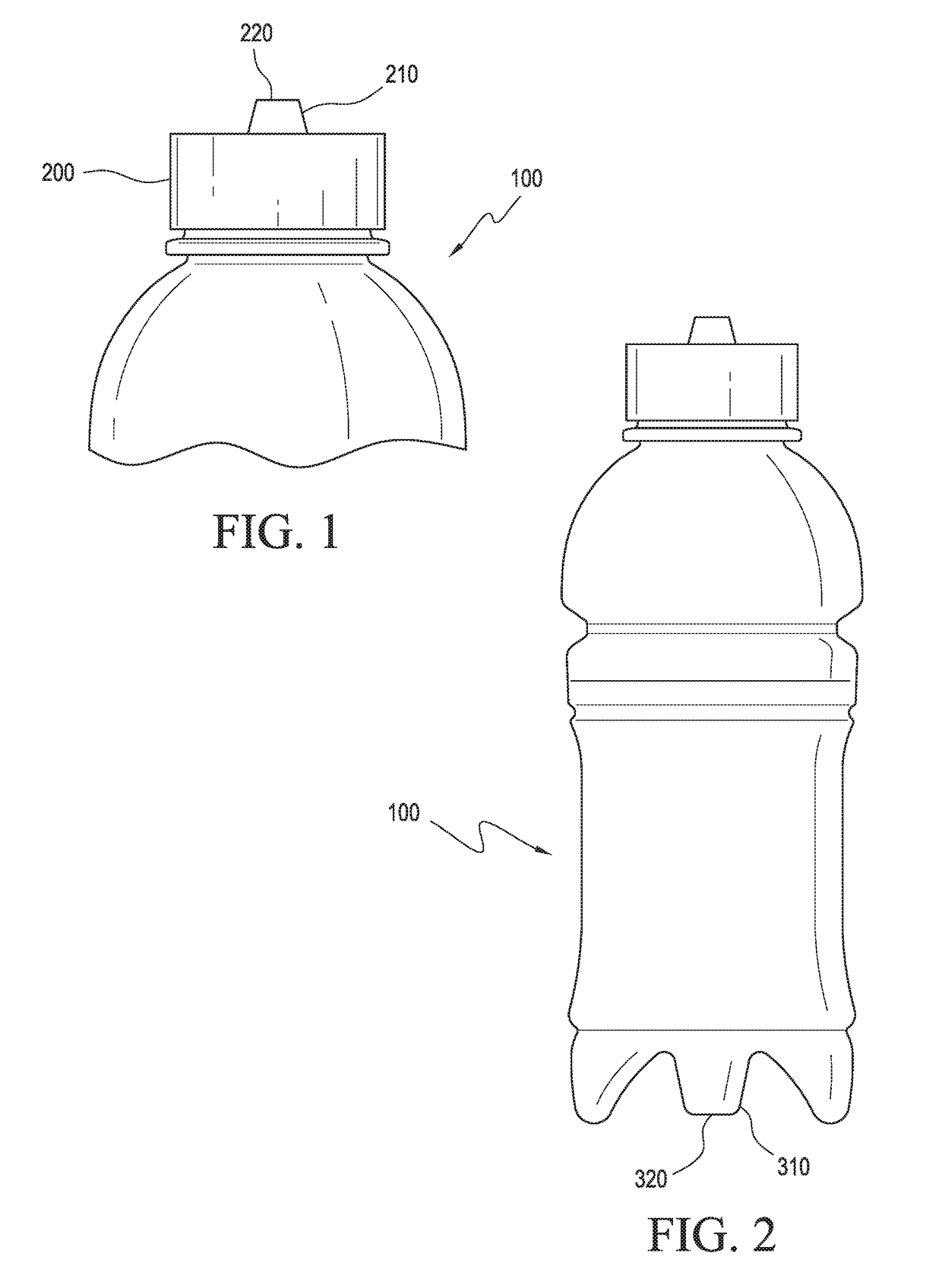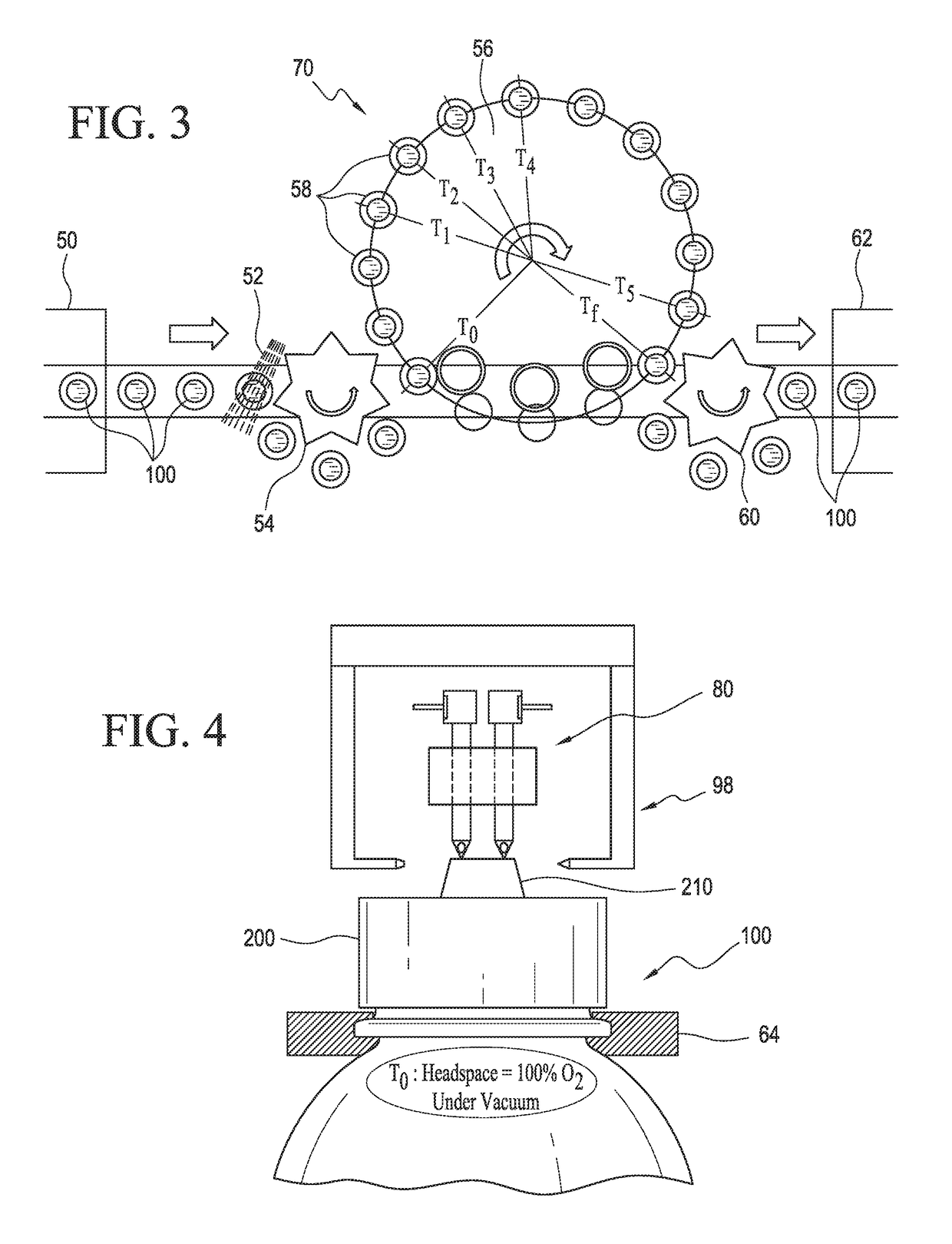System and method of transferring matter through a sealed container
a technology of sealed containers and containers, applied in the directions of packaging, transportation and packaging, liquid handling, etc., can solve the problems of affecting the design freedom of bottles, and affecting the quality of bottles
- Summary
- Abstract
- Description
- Claims
- Application Information
AI Technical Summary
Benefits of technology
Problems solved by technology
Method used
Image
Examples
Embodiment Construction
[0039]The present teachings relate to a system and method that allows for the transfer of matter (i.e. gases, liquids, solids) through a sealed container to flush, pressurize, and seal the container. This method is ideally suited for use with, but not limited to, a hot-fill bottling operation using any type of container, such as a container made from PET. After the beverage container is hot-filled and sealed, the plastic closure and / or plastic bottle can be opened and then flushed, pressurized, and re-sealed by way of (i) a multiple needle approach, or (ii) a rapid cryogenic dosing approach.
[0040]According to the present teachings, the bottling process can include the filling of bottles, pouches, tubes, and the like. Moreover, the container can be made from PET, HDPE, LDPE, any polyethylene, polystyrene, or polypropylene material, or any other plastic, rubber, metallic, paper-based, or equivalent container or a container made from a laminate or composite material.
[0041]As shown in F...
PUM
 Login to View More
Login to View More Abstract
Description
Claims
Application Information
 Login to View More
Login to View More - R&D
- Intellectual Property
- Life Sciences
- Materials
- Tech Scout
- Unparalleled Data Quality
- Higher Quality Content
- 60% Fewer Hallucinations
Browse by: Latest US Patents, China's latest patents, Technical Efficacy Thesaurus, Application Domain, Technology Topic, Popular Technical Reports.
© 2025 PatSnap. All rights reserved.Legal|Privacy policy|Modern Slavery Act Transparency Statement|Sitemap|About US| Contact US: help@patsnap.com



